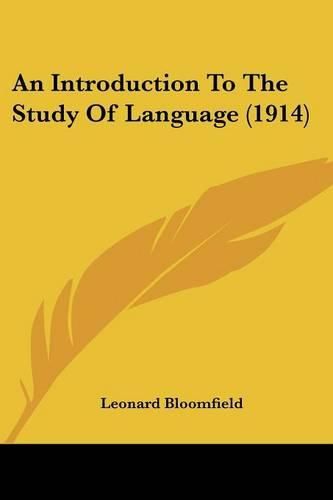Readings Newsletter
Become a Readings Member to make your shopping experience even easier.
Sign in or sign up for free!
You’re not far away from qualifying for FREE standard shipping within Australia
You’ve qualified for FREE standard shipping within Australia
The cart is loading…






Purchase of this book includes free trial access to www.million-books.com where you can read more than a million books for free. This is an OCR edition with typos. Excerpt from book: is closely associated with a type of experience, and a new experience with the same dominant features calls forth the same gesture, without any consciousness of a transference on the part of the speaker. We shall meet similar inevitable transferences or rather extensions of meaning when we speak of vocal language. In gesture- language they are limited, however, by the immediate and apparent connection or identity of most gestures with the natural expressive reaction to the experience. Because most gestures are so immediately intelligible a gesture not immediately intelligible is but slowly adopted, and the number of such never becomes very great. The main stock of every system of gesture is made up of such original forms as the deictic and the graphic representative gestures, which are practically identical with natural expressive movements. 3. Writing. The expressive movements so far discussed have given rise not only to gesture-language but also to writing. Picture-writing is originally the tracing of an expressive movement on a permanent material. Its close kinship with gesture results in the transference of symbols from one to the other. We find not only delineations of objects (such as a house) made with exactly the same strokes as are used in representative gesture, but even symbolic gestures are indicated in the picture. Among the Indians a hand-movement upward from the head means ‘big man’ or ‘chief: in picture- writing the same meaning is expressed by a line drawn upward from the head of the figure. Similarly, we find transference of pictorial symbols to gesture. The pictorial symbol for 'exchange’ among the Indians consists of two crossed lines, ? significant either of the act of exchange itself or of the crossing of paths at which barter between- primitive communitie…
$9.00 standard shipping within Australia
FREE standard shipping within Australia for orders over $100.00
Express & International shipping calculated at checkout
Purchase of this book includes free trial access to www.million-books.com where you can read more than a million books for free. This is an OCR edition with typos. Excerpt from book: is closely associated with a type of experience, and a new experience with the same dominant features calls forth the same gesture, without any consciousness of a transference on the part of the speaker. We shall meet similar inevitable transferences or rather extensions of meaning when we speak of vocal language. In gesture- language they are limited, however, by the immediate and apparent connection or identity of most gestures with the natural expressive reaction to the experience. Because most gestures are so immediately intelligible a gesture not immediately intelligible is but slowly adopted, and the number of such never becomes very great. The main stock of every system of gesture is made up of such original forms as the deictic and the graphic representative gestures, which are practically identical with natural expressive movements. 3. Writing. The expressive movements so far discussed have given rise not only to gesture-language but also to writing. Picture-writing is originally the tracing of an expressive movement on a permanent material. Its close kinship with gesture results in the transference of symbols from one to the other. We find not only delineations of objects (such as a house) made with exactly the same strokes as are used in representative gesture, but even symbolic gestures are indicated in the picture. Among the Indians a hand-movement upward from the head means ‘big man’ or ‘chief: in picture- writing the same meaning is expressed by a line drawn upward from the head of the figure. Similarly, we find transference of pictorial symbols to gesture. The pictorial symbol for 'exchange’ among the Indians consists of two crossed lines, ? significant either of the act of exchange itself or of the crossing of paths at which barter between- primitive communitie…